Fresh flowers enhance your wedding in every way, but the one floral accessory everyone will remember is your brides bouquet. I feel strongly that the brides bouquet is the ultimate accessory to the bride. There are no hard and fast rules about wedding flowers. It is really up to personal choice; however knowing a few essentials and some helpful tidbits will help your decision process.
There are many different types of bouquets that a bride- to- be can choose from. To find the perfect bouquet for you, think of it in terms of an overall style. Some suggestions are simple, natural and romantic. A simple bouquet of all one flower can be in a traditional or modern style. A Natural bouquet seems to have been picked straight from your garden. A romantic bouquet is feminine and dramatic. The style of bouquet you choose should be determined by what feeling you and your groom want to achieve overall at your wedding.
All three styles of bouquets can be adapted to any shape of bouquet. Generally speaking, the shape of your bouquet will be determined largely by your dress style and shape. Rule of thumb, the bigger the dress, the bigger the bouquet. You will also want to take into account your body type. To help you determine the style and design that best compliments your vision, browse the glossary for flower suggestions and which bouquet is best for your dress and body type.
Think of your bouquets as you would your veil, your jewelry and your bridal shoes. Each of these individual accessories may be lovely on its own, but in order to form a complete package they also need to work together. The shape and style of your bouquet should flow with the other elements of your wedding attire as well as your overall wedding theme.
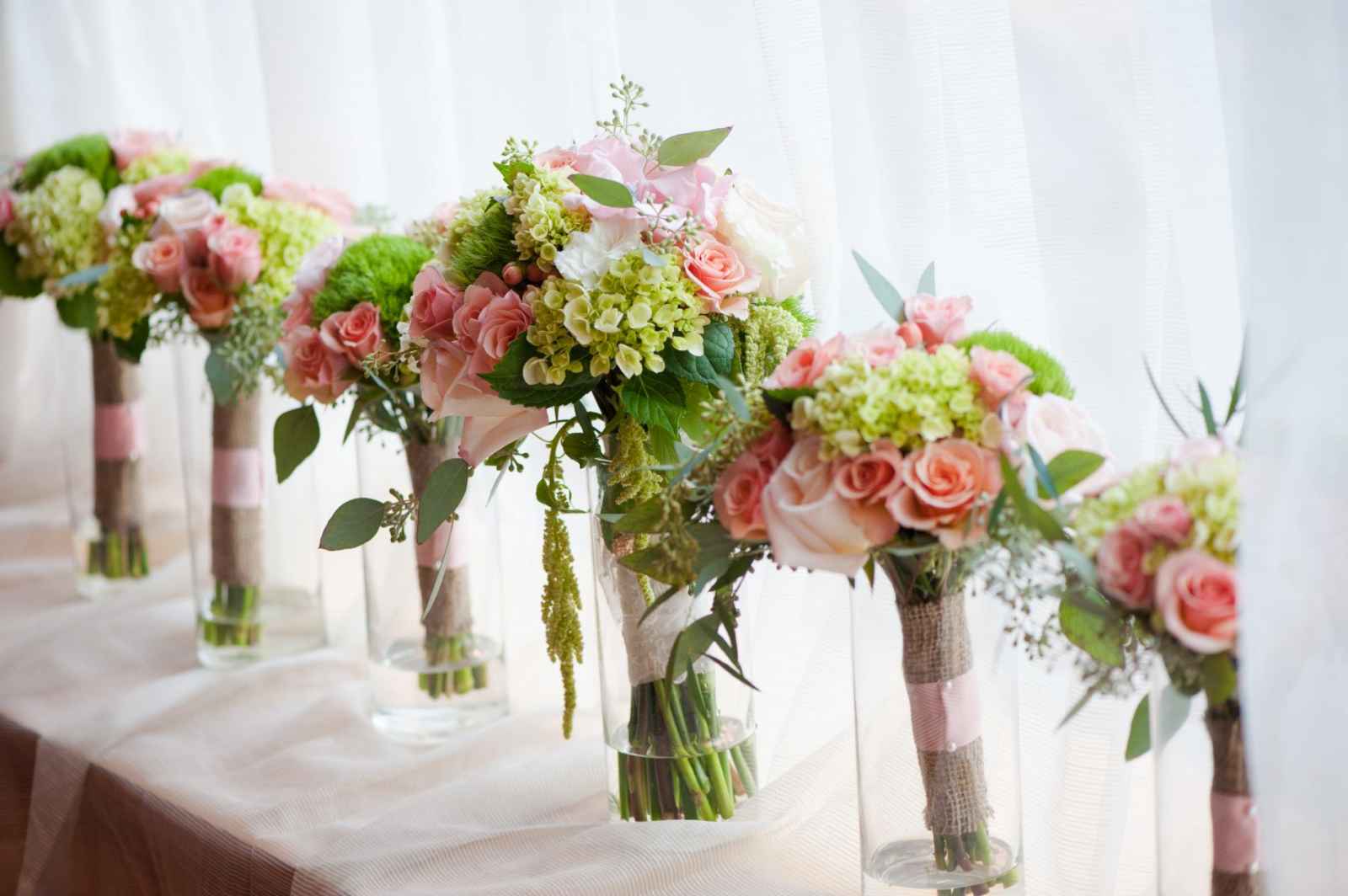
Round
A classic style. The stems are most often arranged loosely, but they can be brought together into a tight cluster and the stems are not visible.
Design: This bouquet is usually designed in a bouquet holder which is a popular and classic style
Flower suggestions: Roses, Dianthus, Hydrangeas, Lilies, Stephanotis
Bride's body/dress type: Goes will with any style dress
Biedermeier
This is a Victorian variation of the Round bouquet. It is designed with concentric circles of flowers, one flower variety or one color per ring.
Design: This is the most formal Round bouquet a bride can carry and very labor involved design
Flower suggestions: Roses, Stephanotis, Ranunculas, button Pomps.
Bride's body/dress type: Formal dress
Nosegay/Posy
The nosegay and posy are similar in design, only the Posy is smaller and more perfect for flower girls and bridesmaids. Flowers are in a dense and compact form. This design has been the bouquet of choice for brides-to- be for many years now
Design: Ideal for any variety of flowers and the choices are endless for this bouquet. Using a single variety of flowers is one way to make the clutch formal and elegant. Because it is designed with the stems showing, creatively wrapping the stems with complimentary ribbon and jewelry is stylish and fun.
Flower suggestions: Gerber Daisies, Roses, Calla Lilies, Stargazers, Hydrangeas, Orchids, just to name a few!
Bride's body/dress type: Perfect for a formal or informal event
Hand-Tied
This is the most natural style of bouquet for outdoor and informal settings. The flowers are simply gathered together and tied with a ribbon.
Design: A hand tied bouquet is the most versatile design. Mixed flower combinations suite this design perfectly
Flower suggestions: Roses, sunflowers, dahlias, lizianthus, larkspur, pods, berries, tulips, mini callas.
Bride's body/dress type: It complements any dress and body type.
Cascade
This design is the most elegant of bouquets resembling a waterfall of flowers. It is the most formal and traditional of all forms of bouquets.
Design: You should be aware that a cascade bouquet can become very heavy. Be prepared to rest your hands throughout the event.
Flower suggestions: Cascades are more likely to be filled with traditional wedding flowers such as, roses, lilies, stephanotis, gardenias, hydrangeas.
Bride's body/dress type: Cascades are well suited for tall brides and they look wonderful with full gowns. Short brides should avoid long cascade bouquets. Although cascades are traditionally formal there are creative ways to make them informal.
Teardrop
This is a short cascade. It doesn't have the drama that the longer cascade has but it is very sophisticated. Flowers are nestled tightly together.
Design: Short version of a cascade
Flower suggestions: Usually designed with Roses, Peonies, Lilies, Dahlias and/or a combination.
Body/dress type of Bride: A petite bride would feel comfortable carrying
Pomander
This is a small compact bloom-covered ball. It is suspended with a ribbon. 4 to 6 inches in diameter. A pomander is a darling choice for a junior bridesmaid or flower girl.
Design: Use coordinating colors and or flowers from the bridal party
Flower suggestions: Daisies, Dianthus, Roses, Hydrangeas, Sweetheart and Spray Roses.
Bride's body/dress type: Good choice for junior bridesmaid or flower girl.
Composite
A clear statement of individuality. It is an intricate creation of individual petals from a single variety of flowers. They are wired together to form an illusion of a giant flower.
Design: Very labor intense. Brides on a budget will want to consider an alternative.
Flower suggestions: Roses, Lilies, Gladiolus
Bride's body/dress type: Goes will with any style dress
Pageant Bouquet
Also known as a presentation or overarm bouquet. It is a gathering of long-stem flowers that rests naturally across the bend of your elbow. Flowers must have sturdy stems and long lasting blossoms.
Design: As the bride holds the bouquet in her arm it will draw attention to a detailed bodice
Flower suggestions: Calla Lily, long Orchid Stems, Roses, French Tulips, Tuberose.
Bride's body/dress type: Pageant bouquet suits a contemporary, slim-fitting dress.
Boutonniere
The finishing touch to the grooms attire is a small sprig or combination of flowers, berries, pods, greenery, and herbs. The stems are usually bound with ribbon.
Design: In general, boutonnieres are most appealing when the central element is not bigger than a medium-size rose.
Flower suggestions: Larger flowers distract the eye. The groom's flowers are often larger, more detailed or a different color from those of the other gentlemen. While the groom's boutonniere typically coordinates with the bride's bouquet, the groomsmen's flowers should complement the attendants bouquets.



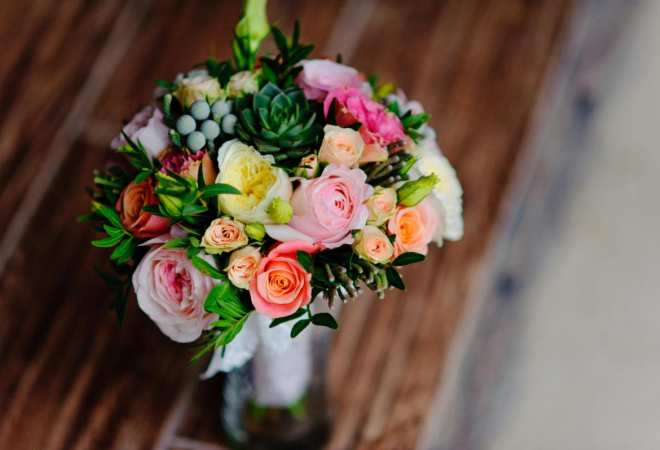
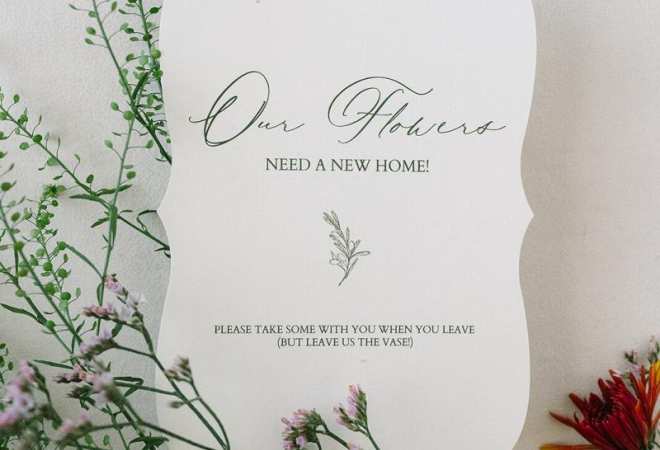
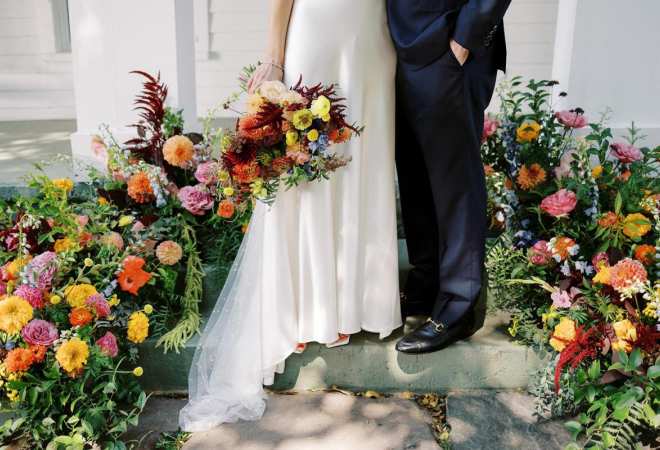

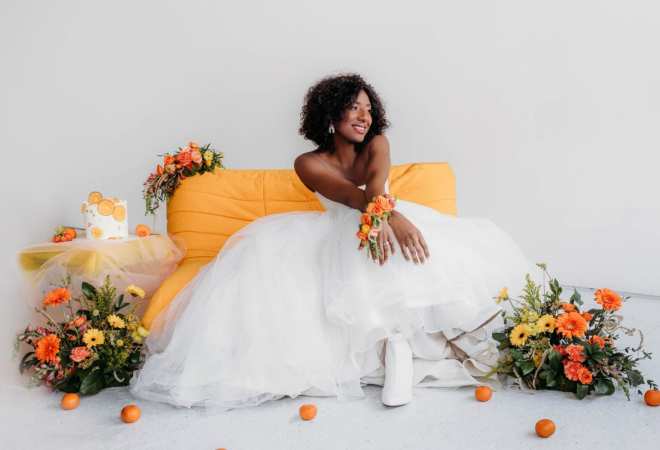
Join the conversation
Log in or register to post comments